The
Two RV Gypsies: Full-Time RVers learned the history of Hagood Mill Historic Site and enjoyed the water wheel and more. 138 Hagood Mill Road Pickens, South Carolina 29671 August 27, 2021 |
Hagood Mill is an operational water-powered gristmill built in 1845 by James Hagood, although other mills previously existed on this site as early as the 1790s. It was listed in the National Register of Historic Places in 1972. The water wheel and mechanical components of the mill were rebuilt in the mid 1970s, and restored again in the 1990s. |
|
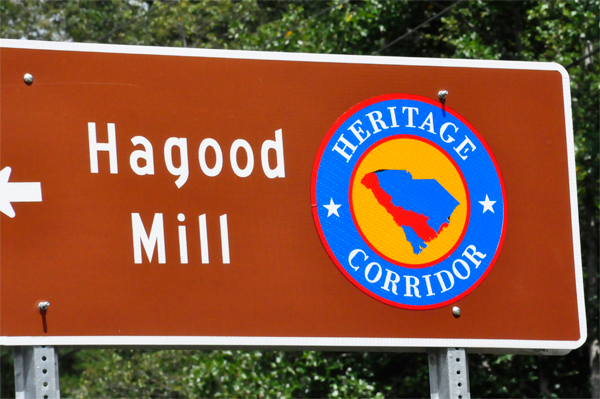 |
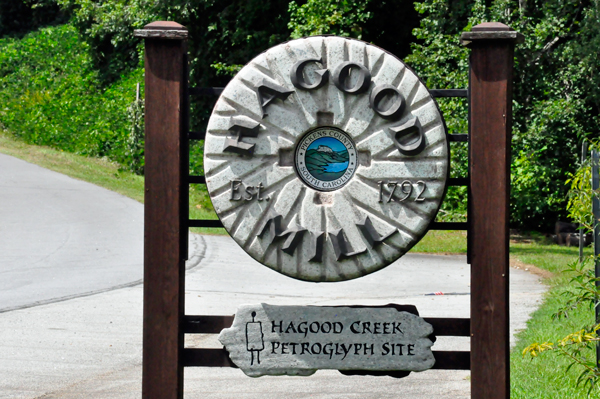 |
Below: The office and gift shop at Hagood Mill - with a Heritage Quilt on the side of the building. |
|
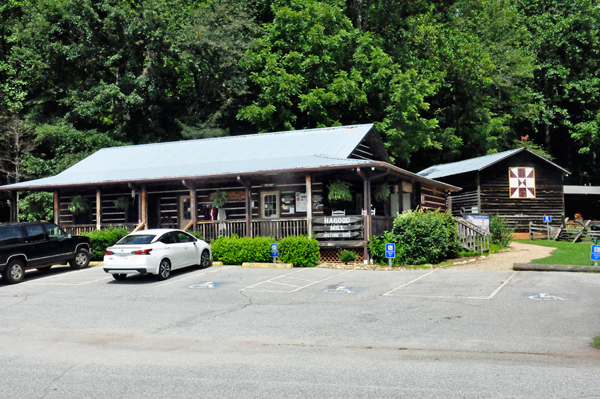 |
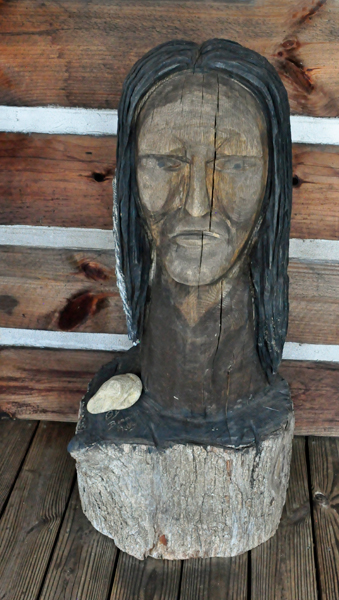 |
Heritage Quilt and sign |
|
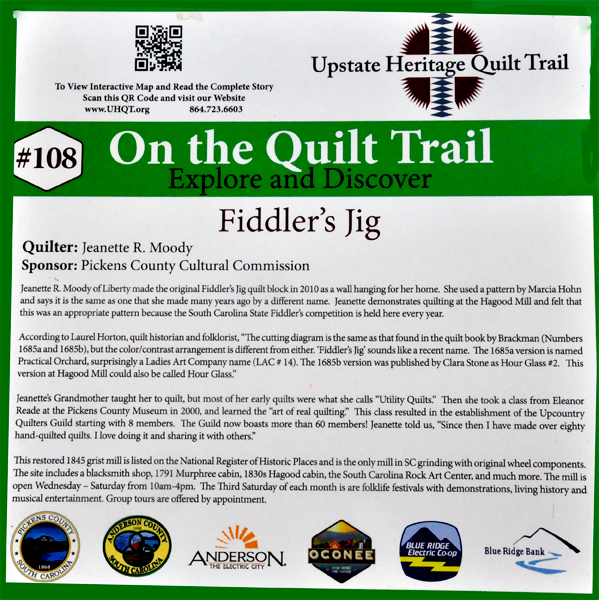 |
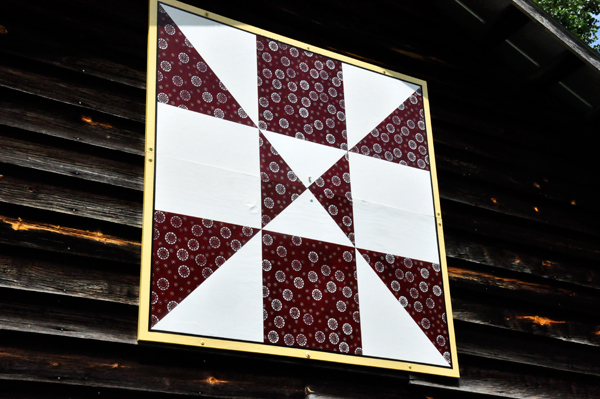 |
First, the two RV Gypsies read some informative signs and had a view of Hagood Branch Creek, earlier known as Jennings Creek, a tributary of the Twelve Mile River. |
|
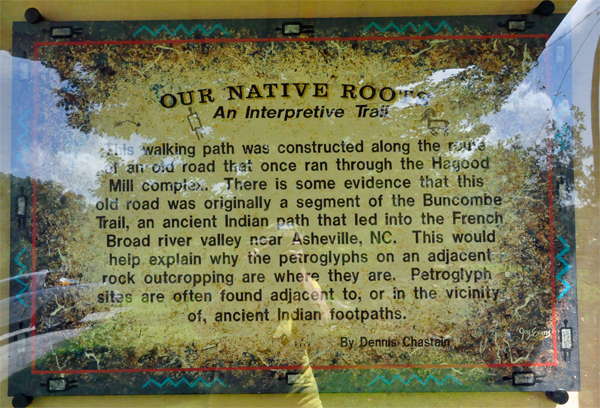 |
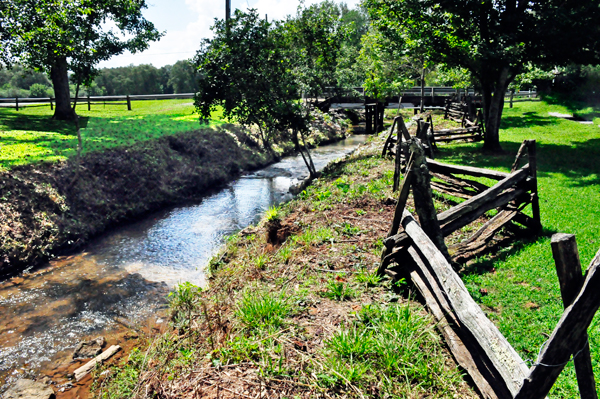 |
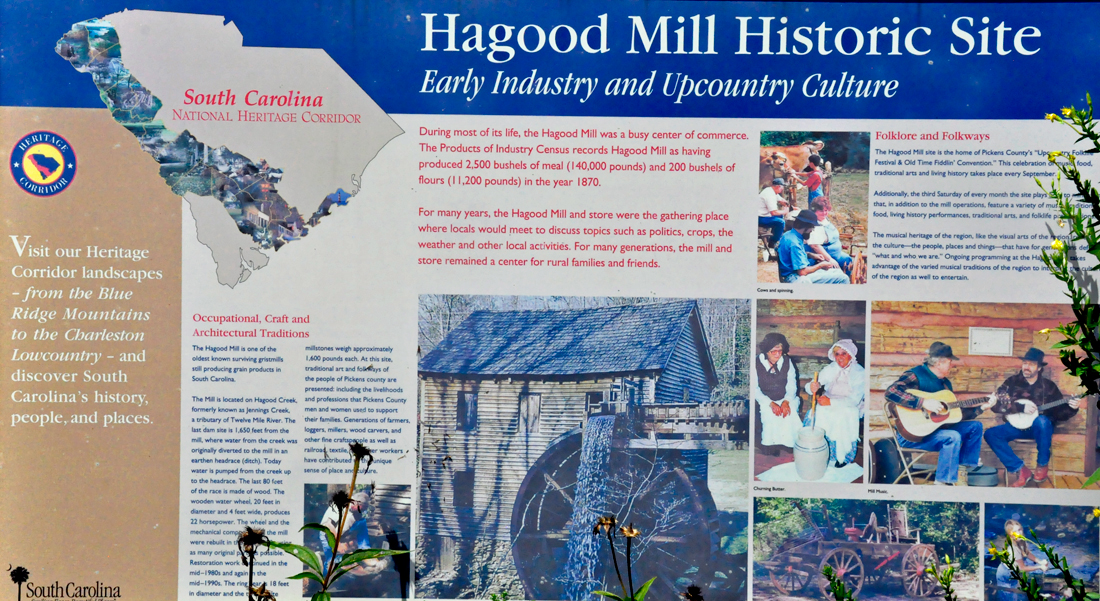 |
|
The first stop for the two RV Gypsies was The Hagood Cabin. |
|
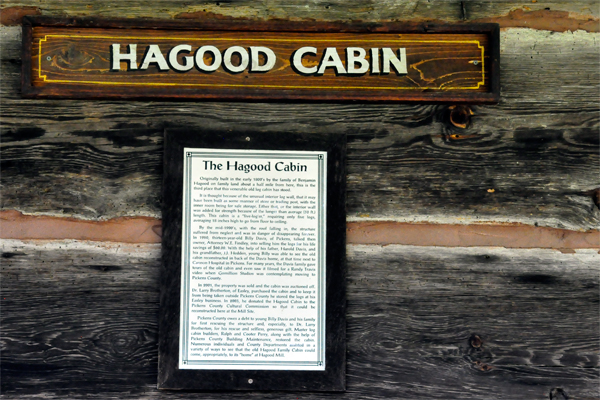 |
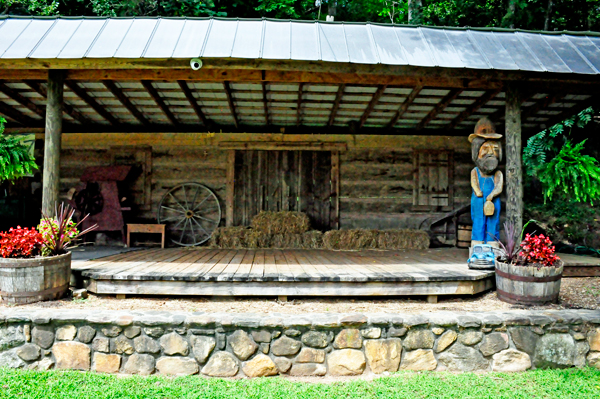 |
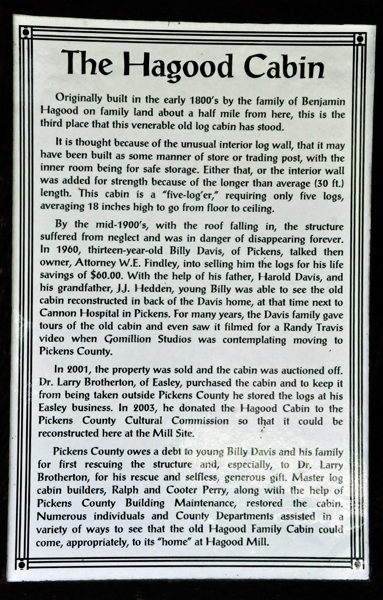 |
|
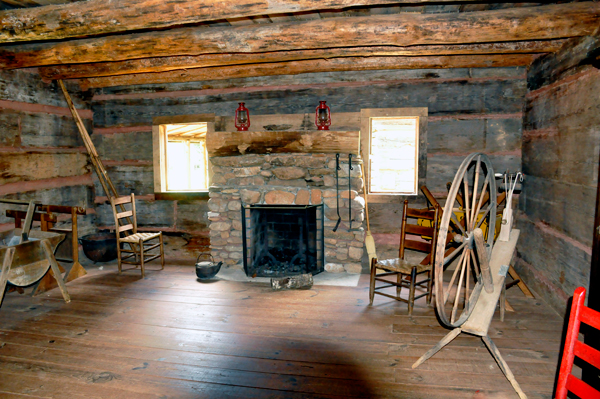 |
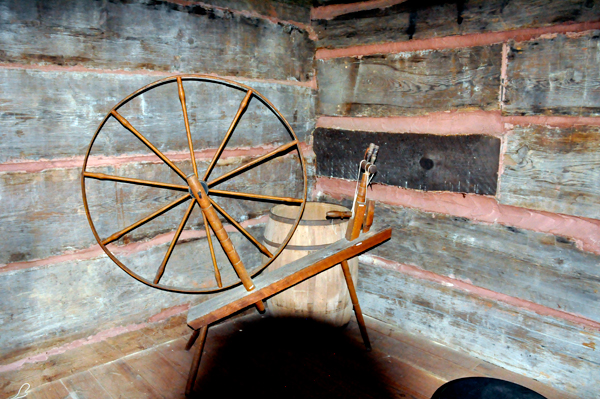 |
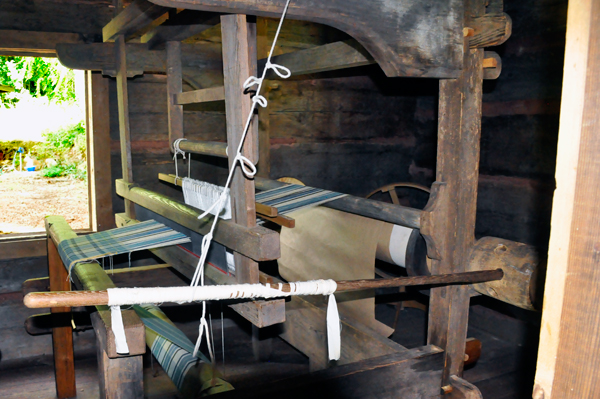 |
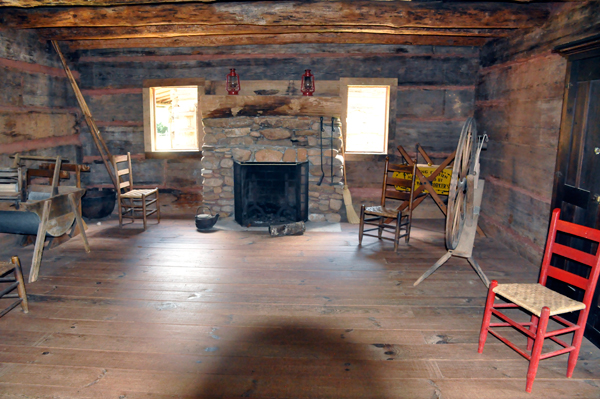 |
Below: The Earthen Oven outside the back door of the Hagood Cabin. Earthen ovens are said to date back to 19,000 years ago. |
|
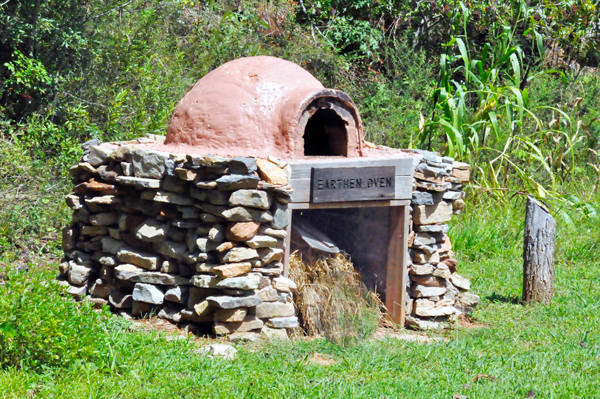 |
|
Below: Then it was on to the Murphree-Hollingsworth Log Cabin |
|
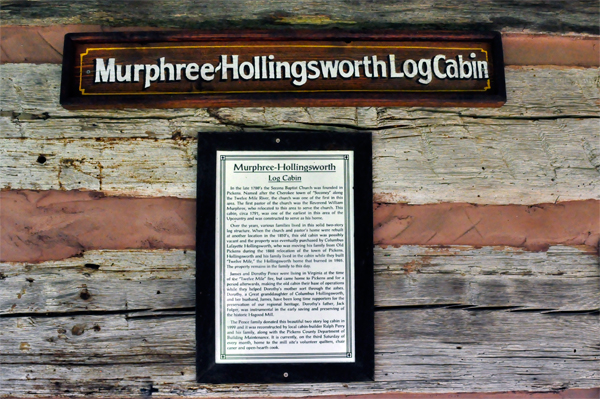 |
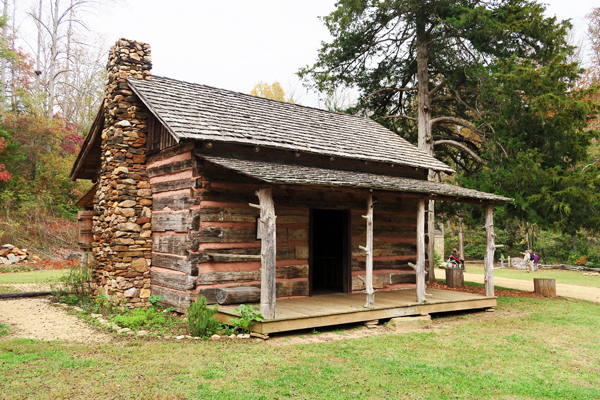 |
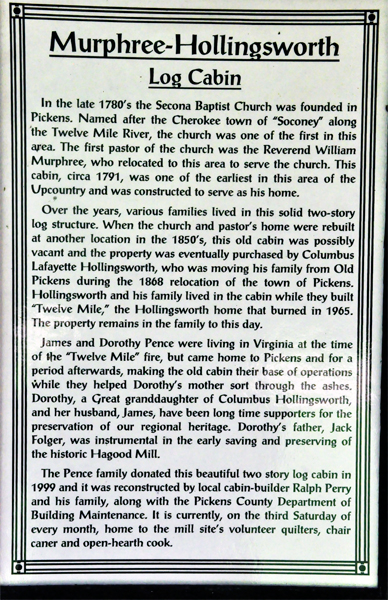 |
|
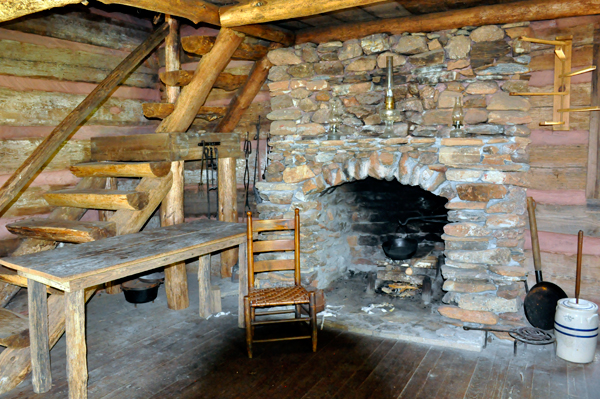 |
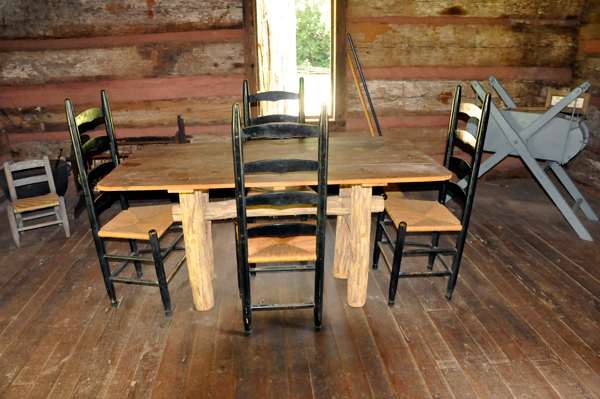 |
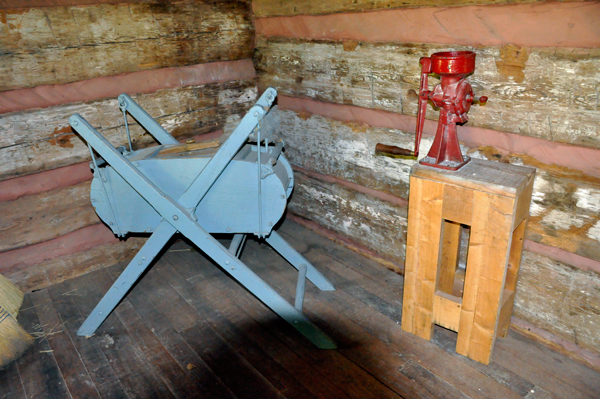 |
|
Below: The two RV Gypsies explored inside the Blacksmith Shop and Cotton Gin - known as the 1845 mill, an unpainted, two-story building. But first, Karen Duquette took two photos of the water wheel behind the building. |
|
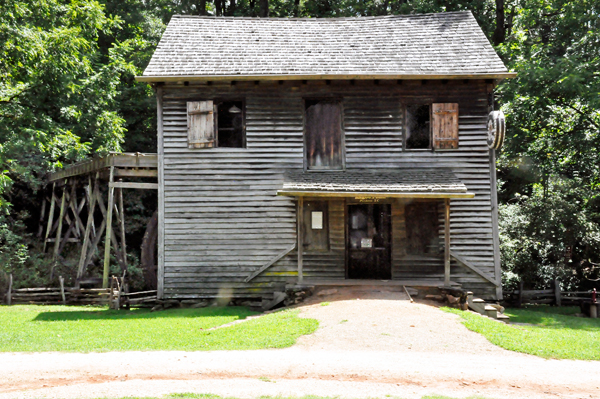 |
|
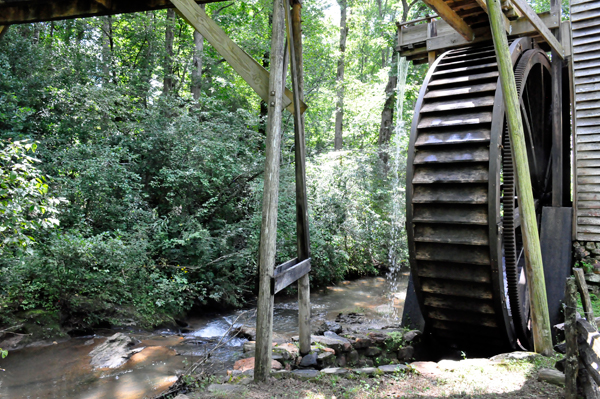 |
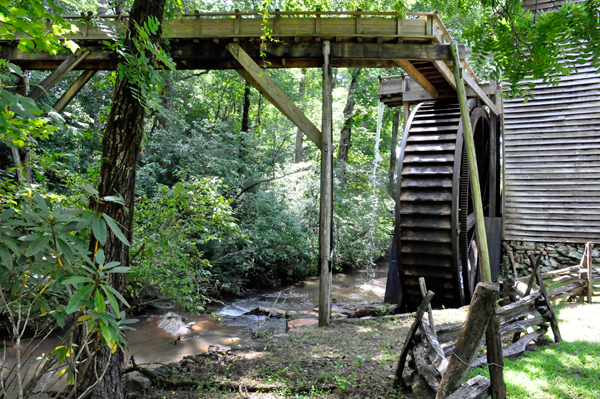 |
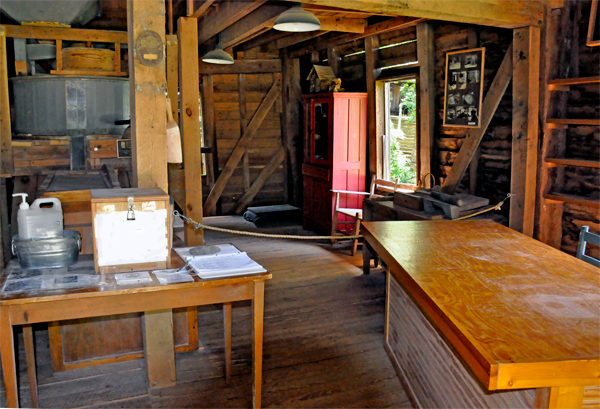 |
 |
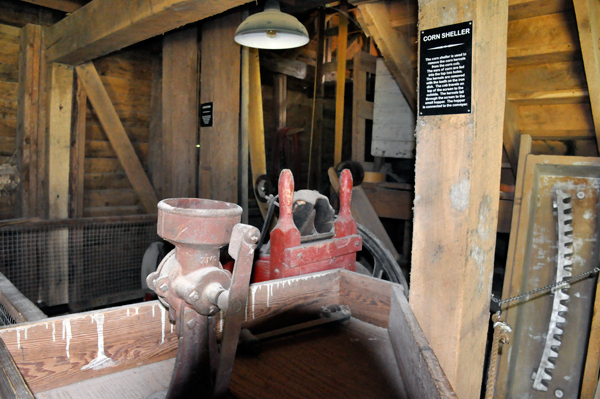 |
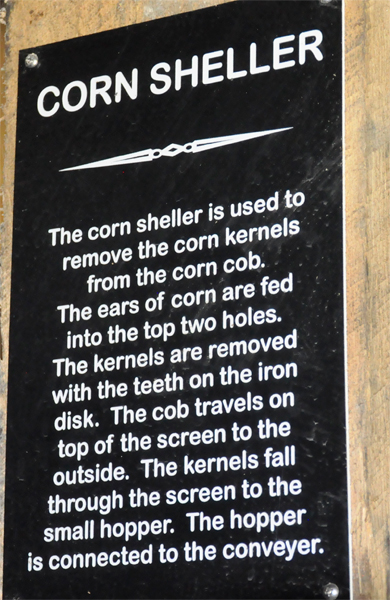 |
Below: Then the two RV Gypsies climbed up the stairs to further explore inside the building. |
|
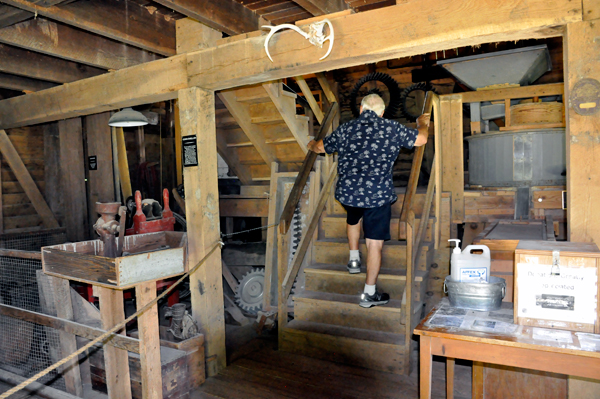 |
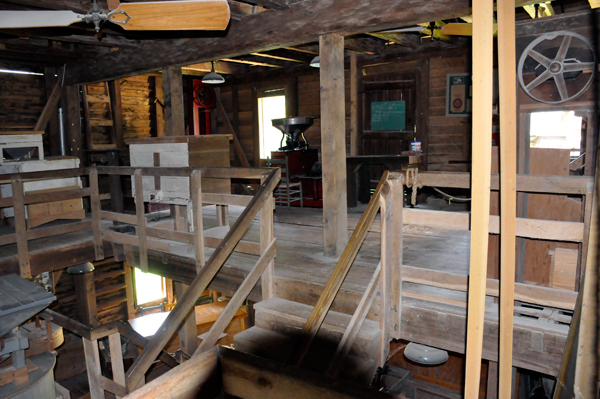 |
Below: At the first platform, Karen Duquette took a photo looking down towards the first floor, and one looking at part of the 2nd floor. |
|
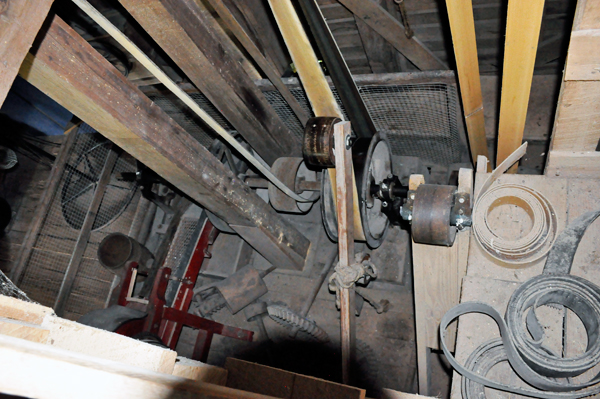 |
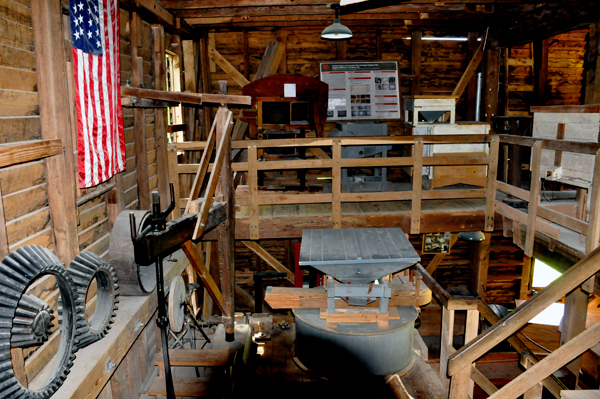 |
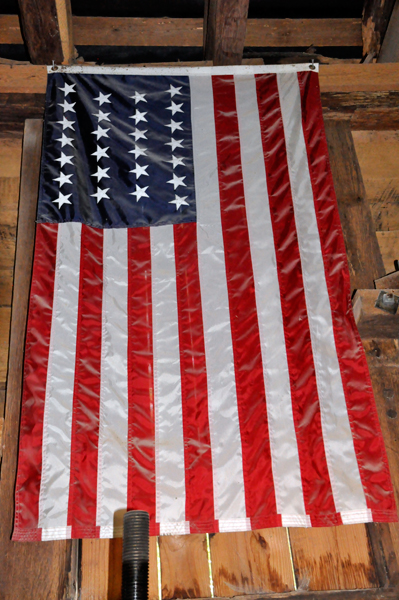 |
|
Below; Then the two RV Gypsies continued up to the second floor of the Hagood Blacksmith Shop |
|
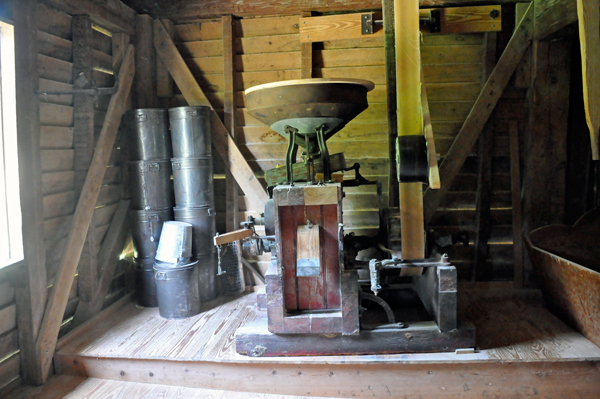 |
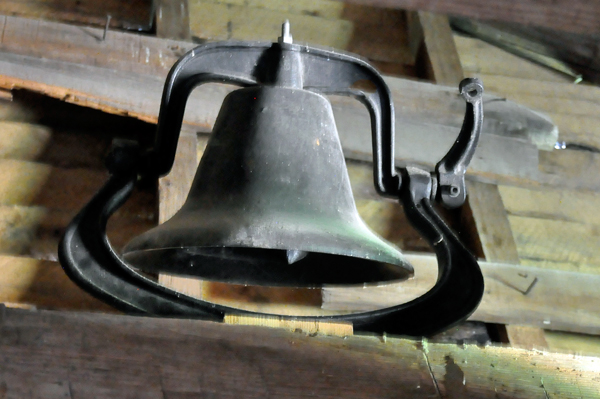 |
Below:
While Looking out through the window on the second floor, Lee Duquette
lost his head |
|
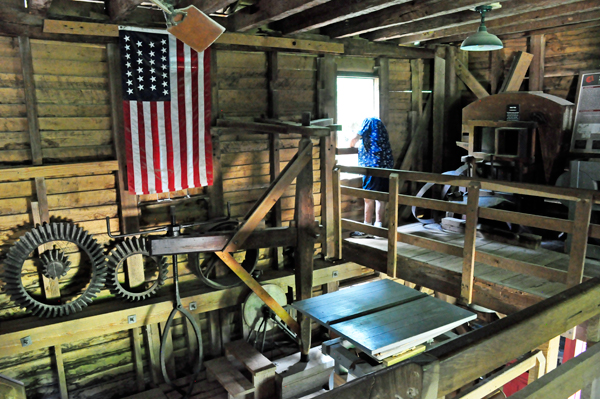 |
|
Below: View from the second floor window on the backside of the building The wooden wheel produces 22 horsepower and is 20 feet in diameter and 4 feet wide. The ring gear is 18 feet in diameter and the two granite millstones weigh about 1,600 pounds each, |
|
 |
|
 |
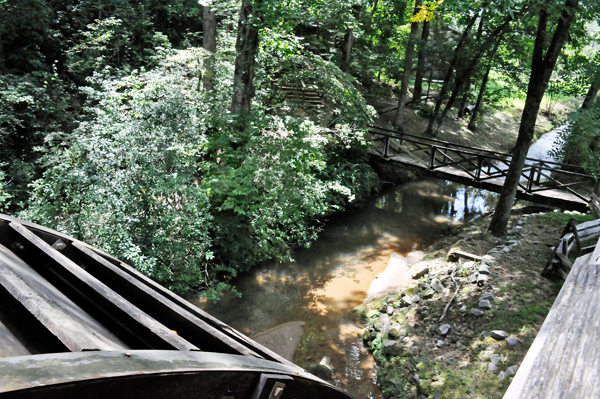 |
 |
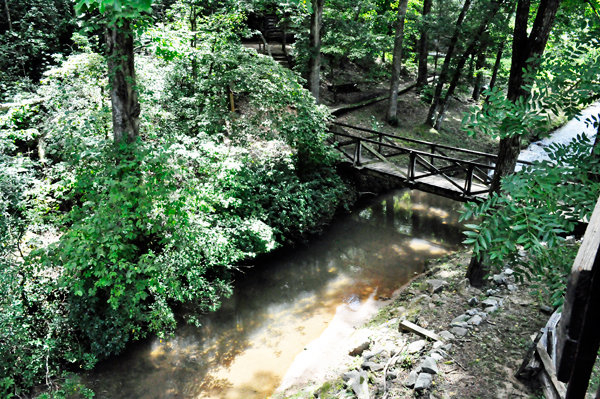 |
Below: Views from the second floor windows in the front of the Blacksmith Shop |
|
 |
|
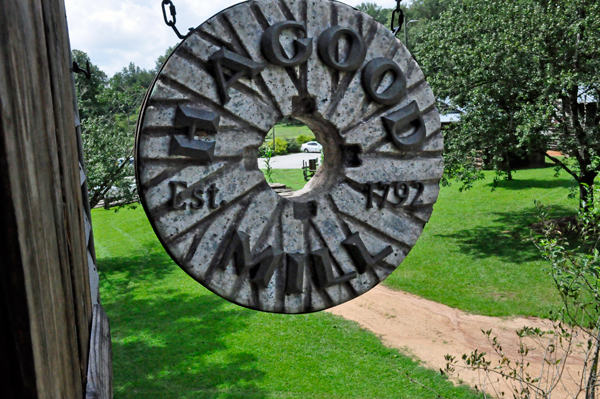 |
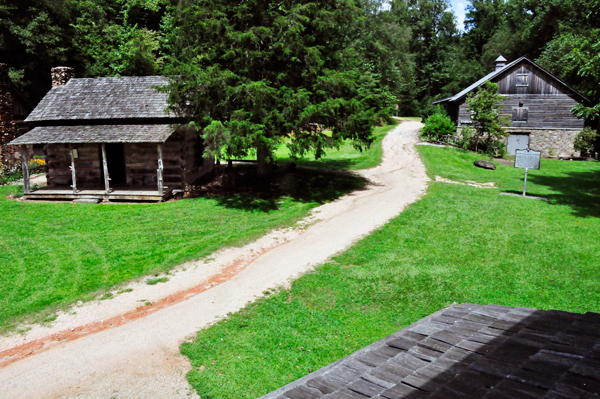 |
Back outside, the two RV Gypsies took time to read and photograph both sides of a historical sign. |
|
Below: A soapstone boulder of metamorphic rock which is commonly called Soapstone or Steatite. Prior to about 4500 years ago, most southeastern pottery was made from soapstone. It is a soft material that can be carved and is very resistant to heat. The patterns in this rock is actually bowls in various states of production, called preforms. They are just bases after the bowl was finished and removed. This is now obsolete technology. - Also below - the stream and very small waterfall to the side of the soapstone boulder. |
|
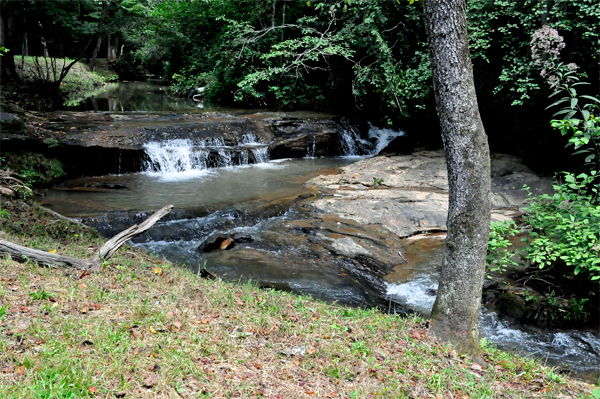 |
|
Below: While standing by the Soapstone boulder and stream shown above, Karen Duquette took a look back at the Blacksmith Shop. |
|
Below is a boulder that may have been used in the extraction of tar or lye, Both of these materials were very important to early settlers and frontiersmen, they were used in medicines, fuel, cleaning and many other uses. |
|
Below: Then it was time for the two RV Gypsies to explore the building called The Hagood Creek Petroglyph Site |
|
Below: Stepping back outside, the two RV Gypsies saw the bridge leading to the hiking trail. They decided not to hike because their next stop was to be a hike to a waterfall. So Karen Duquette took a quick picture from each side of the bridge. |
|
Below: Heading back toward the gift shop, the two RV Gypsies checked out the grinding stones and signs. |
|
Below: The Corn Garden was an important crop to the Native Americans. It was one of their main foods and was eaten at almost every meal. Some corn was dried and ground to be used in making cornmeal. These were really big ears of corn, as shown below. |
|
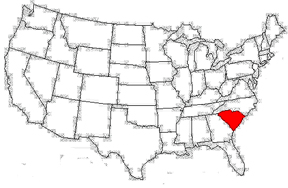
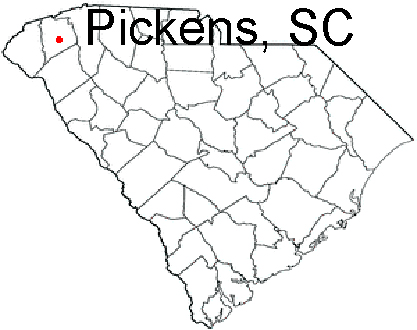
 .
.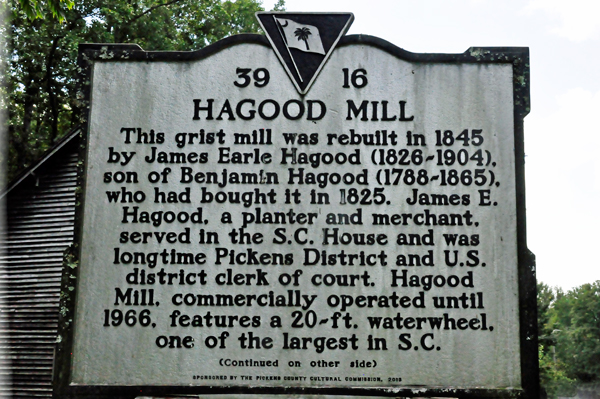
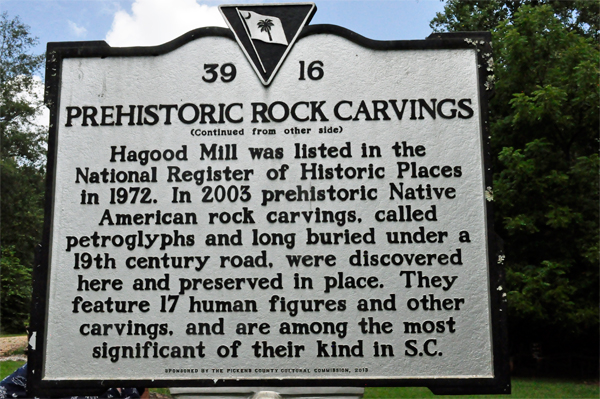
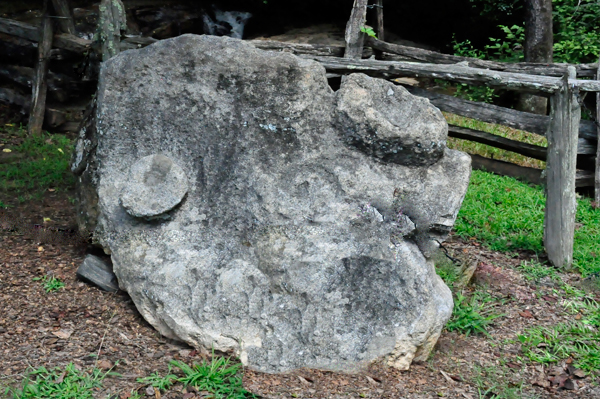
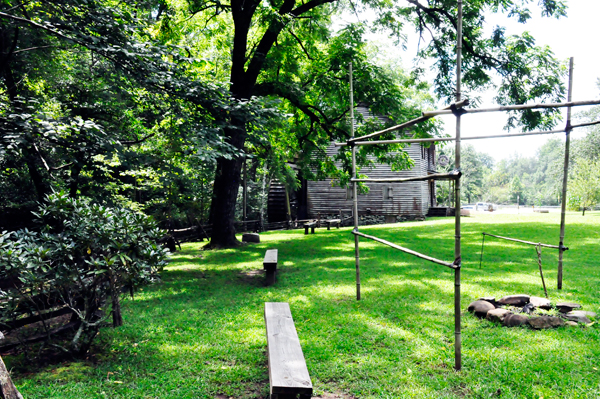
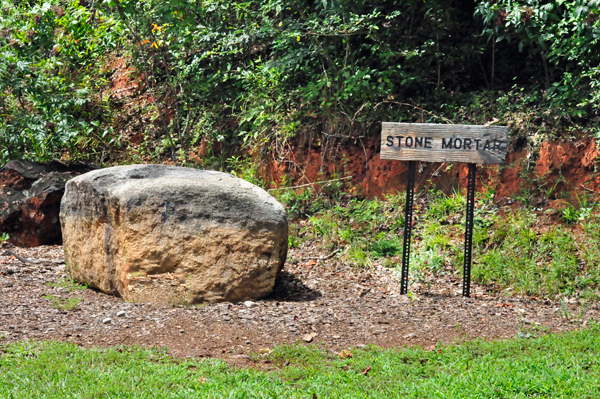
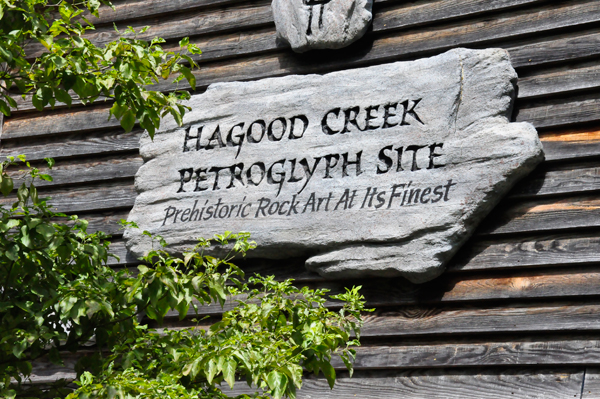
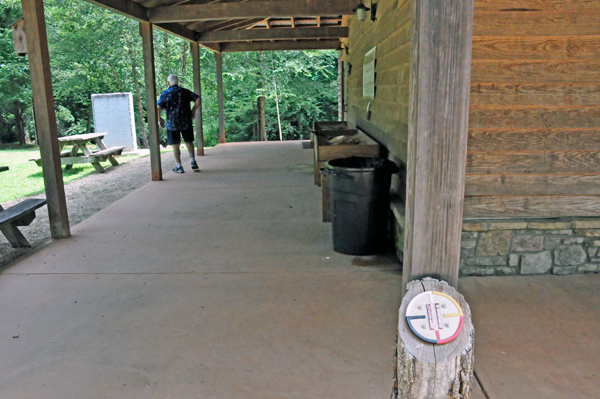
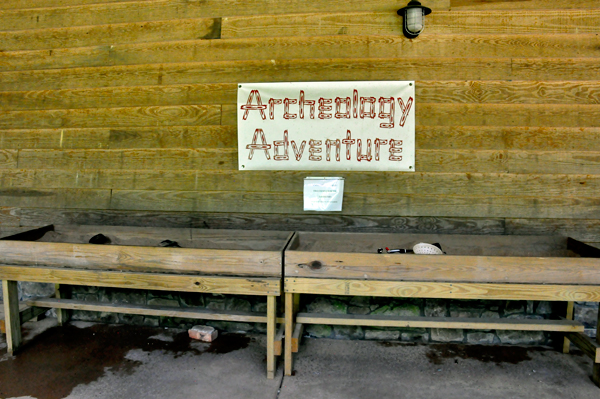
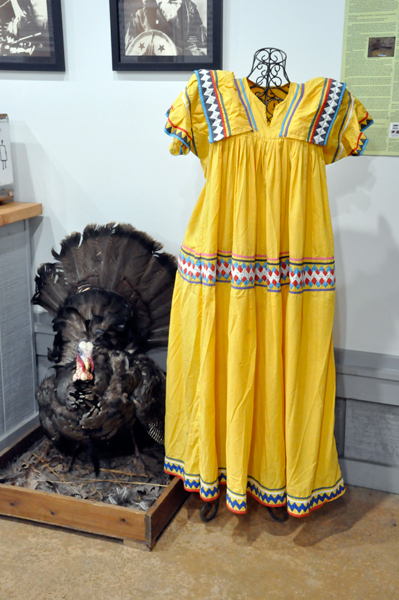
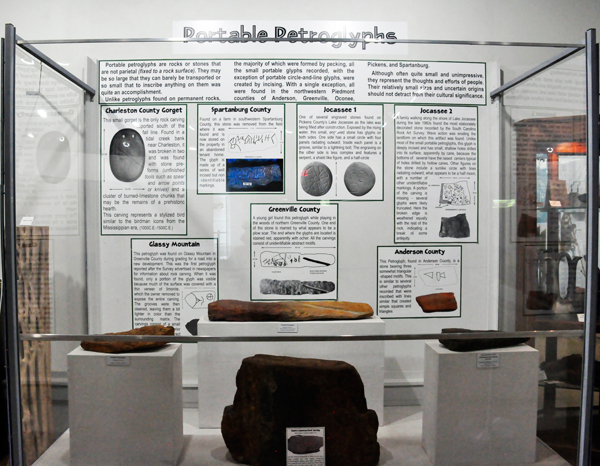
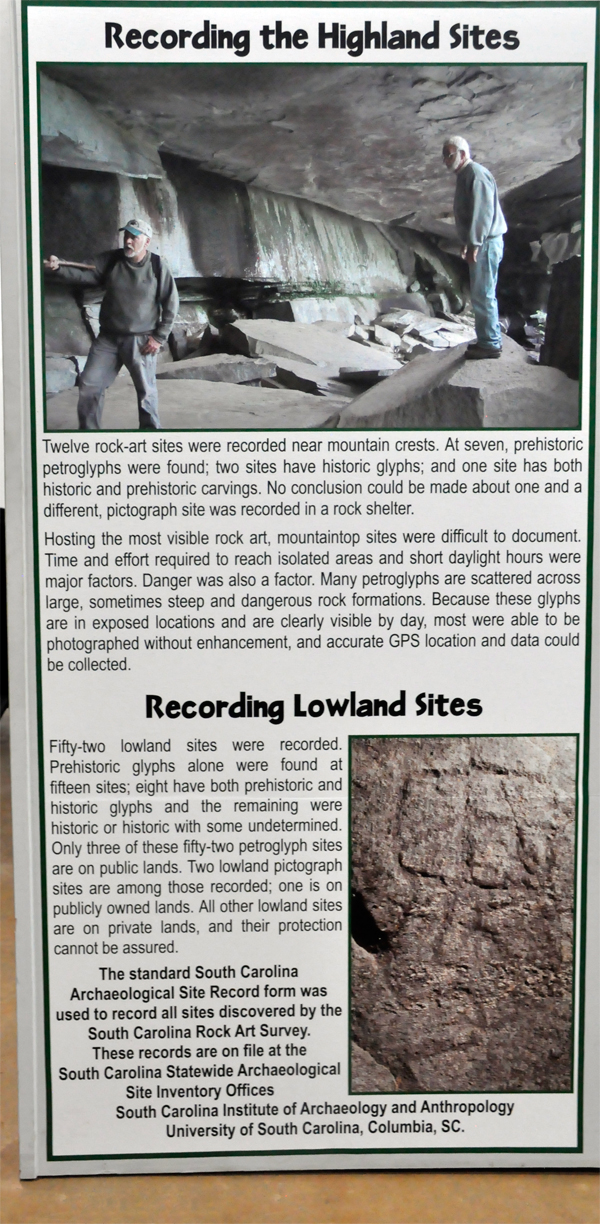
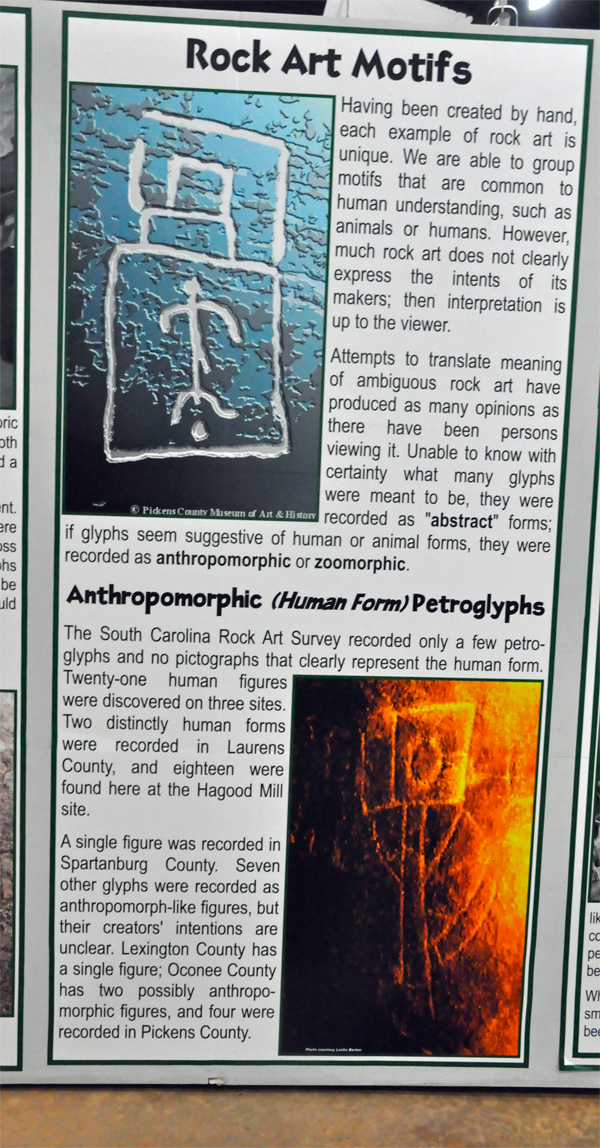
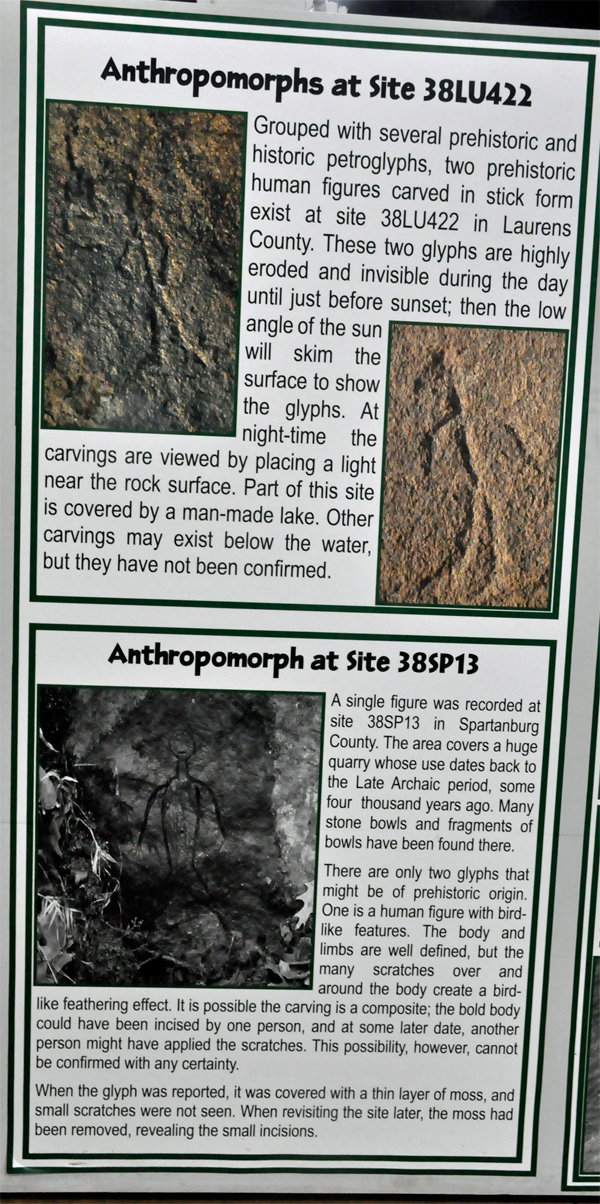
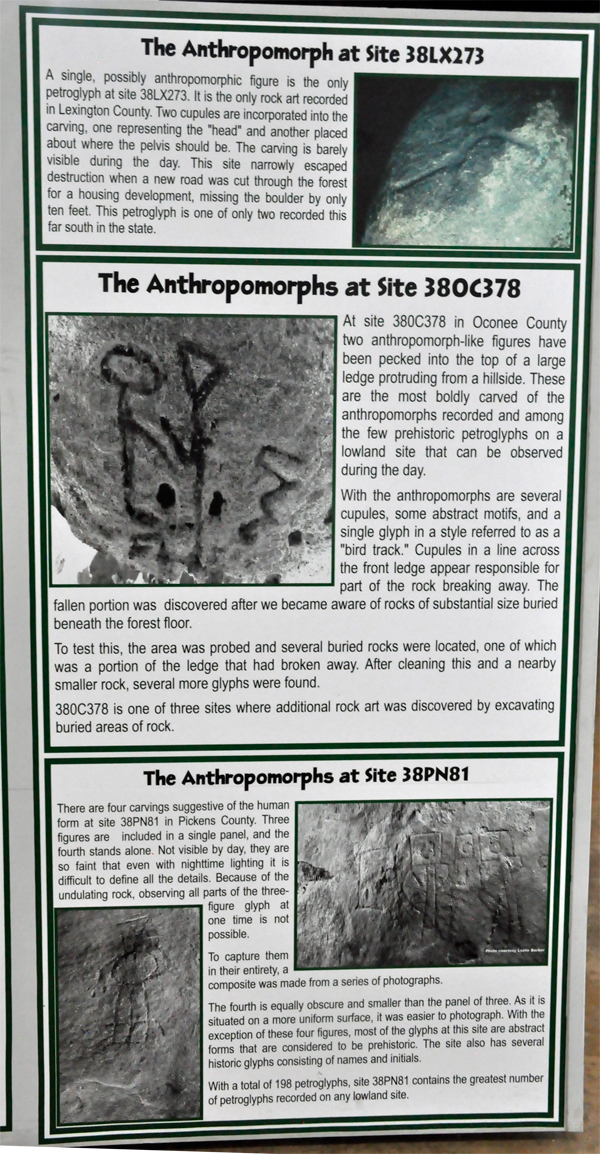
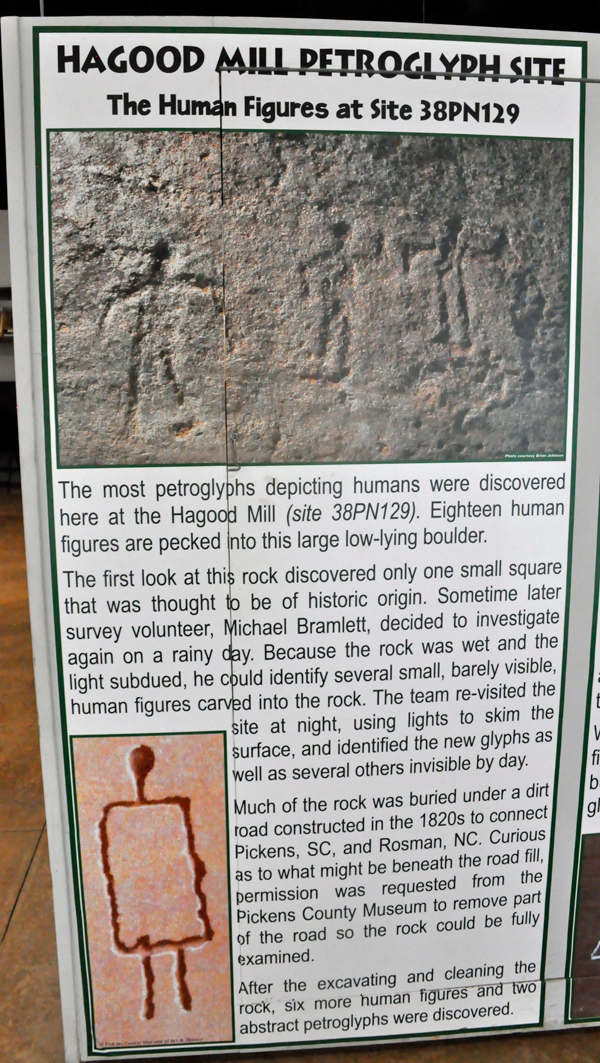
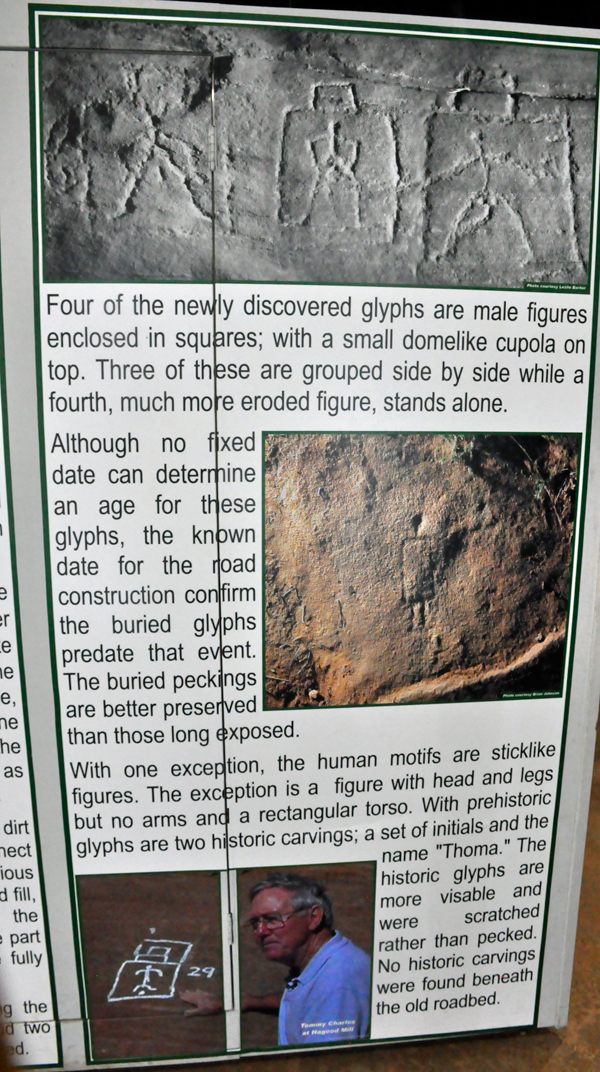
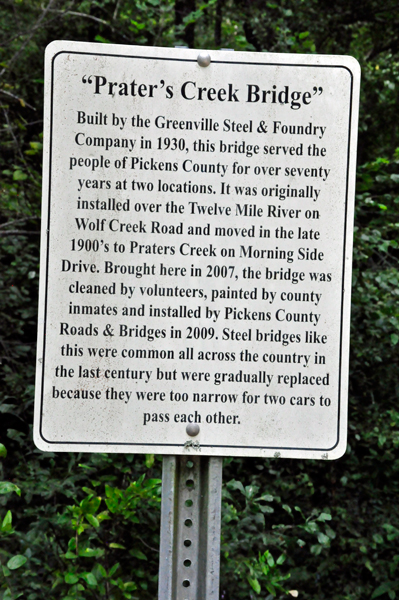
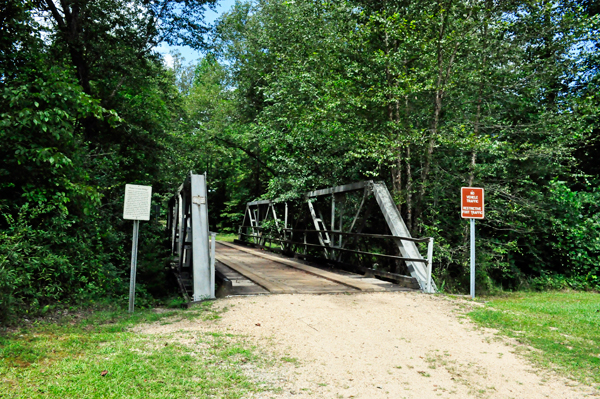
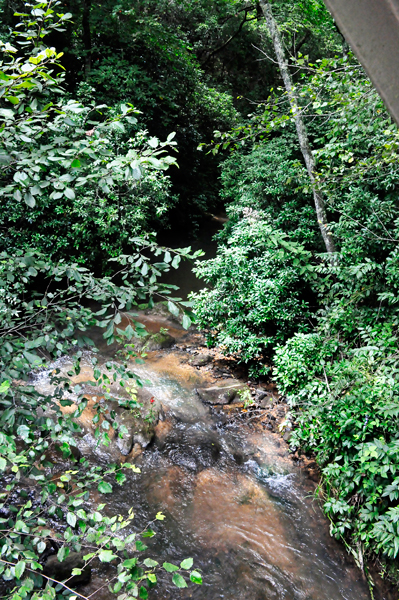
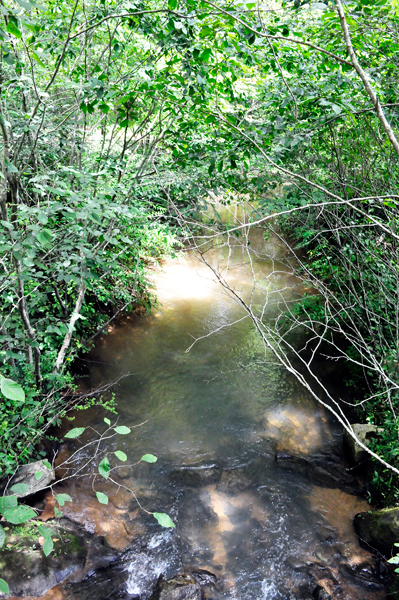
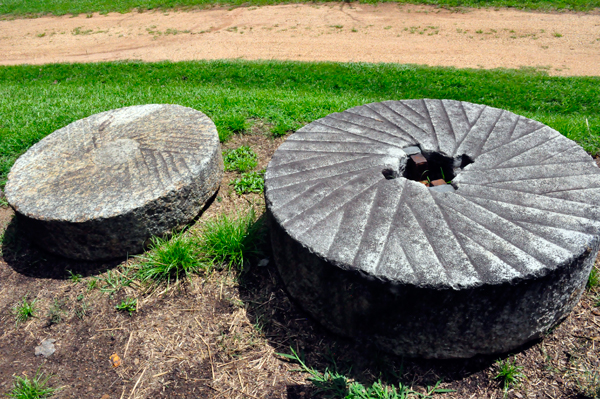
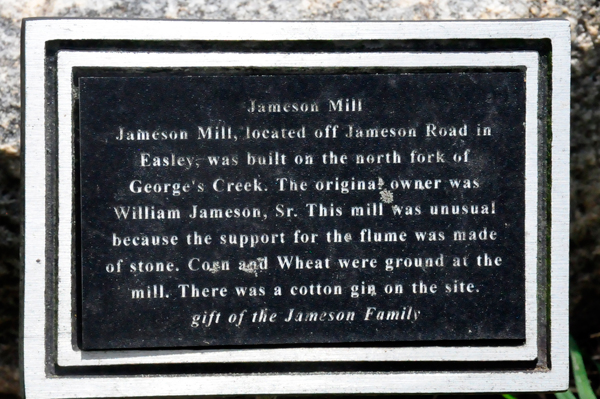
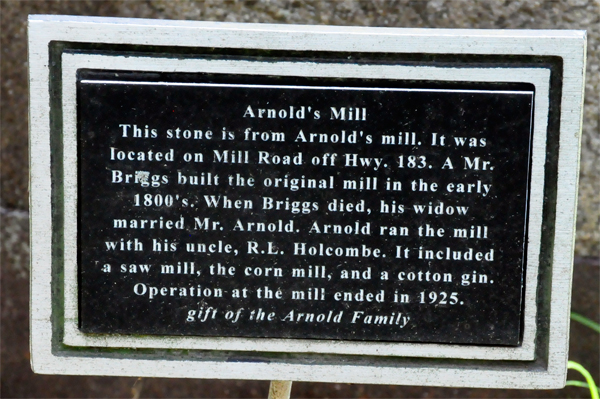
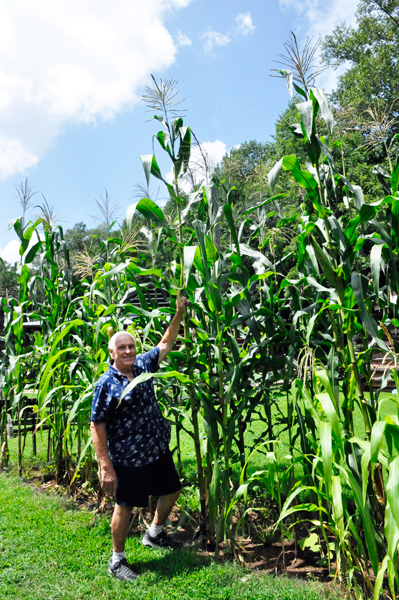
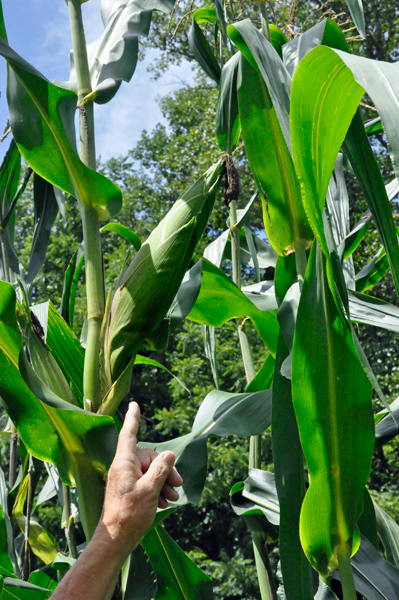

 Continue on in the order of travel to
Continue on in the order of travel to 























